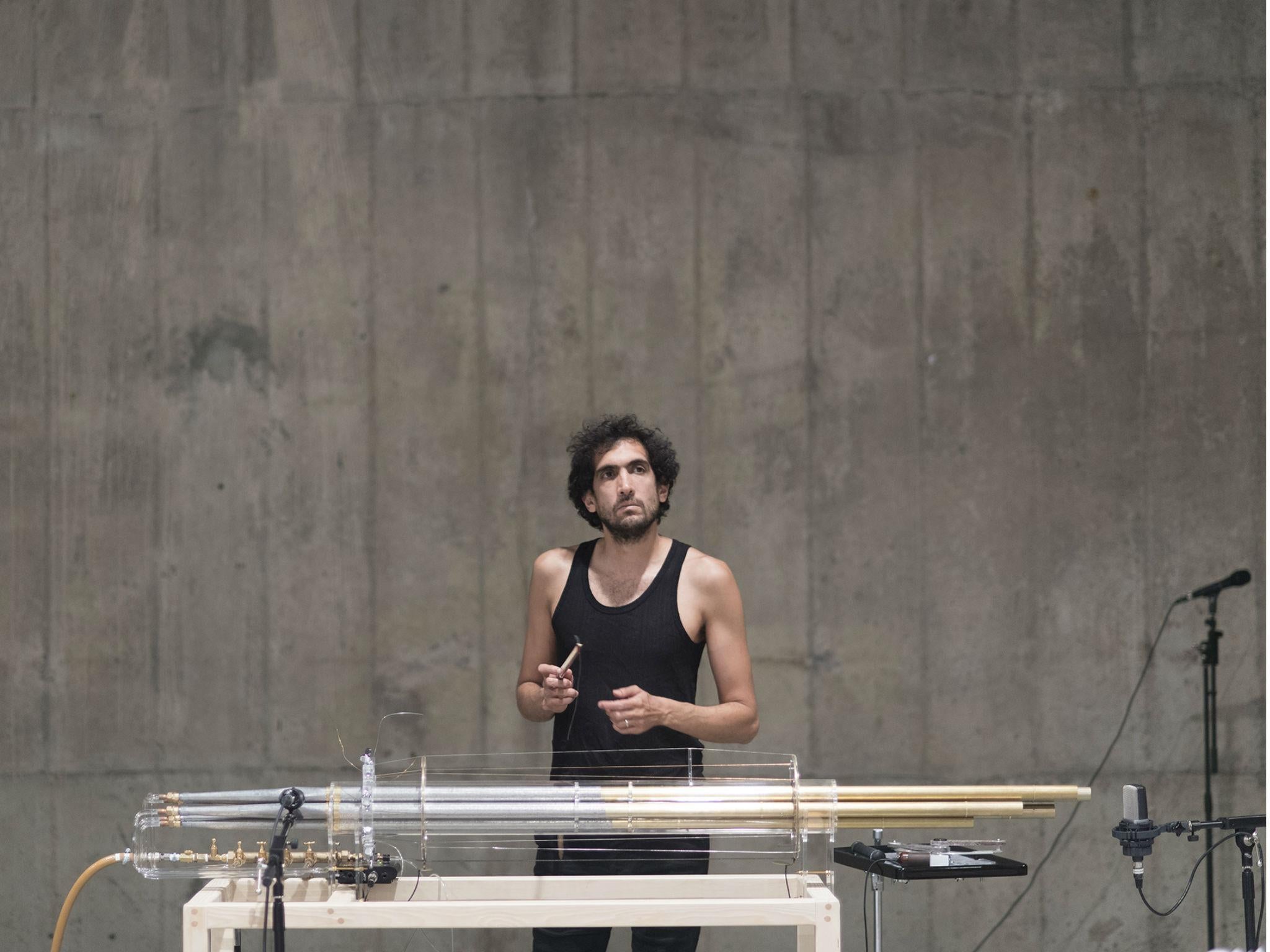BMW Tate Live: Tarek Atoui: The Reverse Collection, review: Linger in the basement of the new Tate Modern and enjoy the moment

Your support helps us to tell the story
From reproductive rights to climate change to Big Tech, The Independent is on the ground when the story is developing. Whether it's investigating the financials of Elon Musk's pro-Trump PAC or producing our latest documentary, 'The A Word', which shines a light on the American women fighting for reproductive rights, we know how important it is to parse out the facts from the messaging.
At such a critical moment in US history, we need reporters on the ground. Your donation allows us to keep sending journalists to speak to both sides of the story.
The Independent is trusted by Americans across the entire political spectrum. And unlike many other quality news outlets, we choose not to lock Americans out of our reporting and analysis with paywalls. We believe quality journalism should be available to everyone, paid for by those who can afford it.
Your support makes all the difference.Tate Modern in London opened the long-awaited Switch House last week. Some critics assumed the Tate was opening a fun palace, more intent about creating an enjoyable visitor experience than a close encounter with the arts of our time and of the future. True, there is the pleasing ascent to the 10th floor, with its 360-degree panoramic views of the city, but I encourage visitors to linger in the basement. Joined to the “old” Tate Modern by the Turbine Hall, architects Herzog and de Meuron have carved out a lobby complete with a brutal yet perversely graceful curving stairway. On this ground floor visitors can enter into what were the tanks of the old power station, one of which is currently partly inhabited by Lebanese sound artist Tarek Atoui. Atoui was born in Beirut in 1980 at the height of the civil war. He left Lebanon in 1998 and moved to France, where he studied electronic music at the French National Conservatory in Reims.
When I meet him during the rehearsals prior to the work’s public opening, he tells me that one of the consequences of being born during the war was that there were no record shops in Beirut or radio to listen to, so his musical education really started when he moved to Paris to study. He confesses: “I have no classical musical education.”
While in Berlin, Atoui came across some ancient instruments in storage in the ethnological museum in Dahlem. He negotiated the bureaucracy of the museum and obtained permission for musicians to play them. The music produced was then recorded, and formed the basis for Atoui to approach contemporary instrument makers to invent instruments based solely on the sounds that the ancient instruments had made. He emphasises the fact that the instruments are based on “aurality”, not the visual impact or social knowledge of the originals. The instruments on display when the musicians are absent are a mixture of quasi-traditional looking blowing horns, African head-stands and, most bizarre perhaps, fine looking porcelain tea cups.
Atoui tells me he was drawn to Arabic music by how relevant it is to this project with “its traditions of improvisation and adaptability to different instruments”. He admits his interest in music stems more from Stockhausen and John Cage and music post-Second World War, then classical music. So when I sit in on a rehearsal later I am prepared to be challenged by the sounds. Atoui will perform with his instrument makers for several hours every day until later when other composers/musicians will be given access to the instruments. What I am unprepared for is the musicality displayed, and the grace in the sound as Atoui gently strikes the Chinese porcelain with a thimble or rubs the edges with a metallic chain. The pots are handmade, he tells me, as it is the only way to give this clear ringing tone. Moving between the traditional looking horns and these more domestic objects, Atoui captivates through sound, and when the music is over the instruments remain to tickle the imagination of the viewer.
It is a generous collaboration and with the dramatic acoustics in this tank should prove to be a popular one. And if, like me, you bump into a kissing couple in Charlotte Posenenske’s mini-pavilions that share the space, let them enjoy the moment.
Continuing until 25 September, Tate Modern. www.tate.org.uk
Join our commenting forum
Join thought-provoking conversations, follow other Independent readers and see their replies
Comments